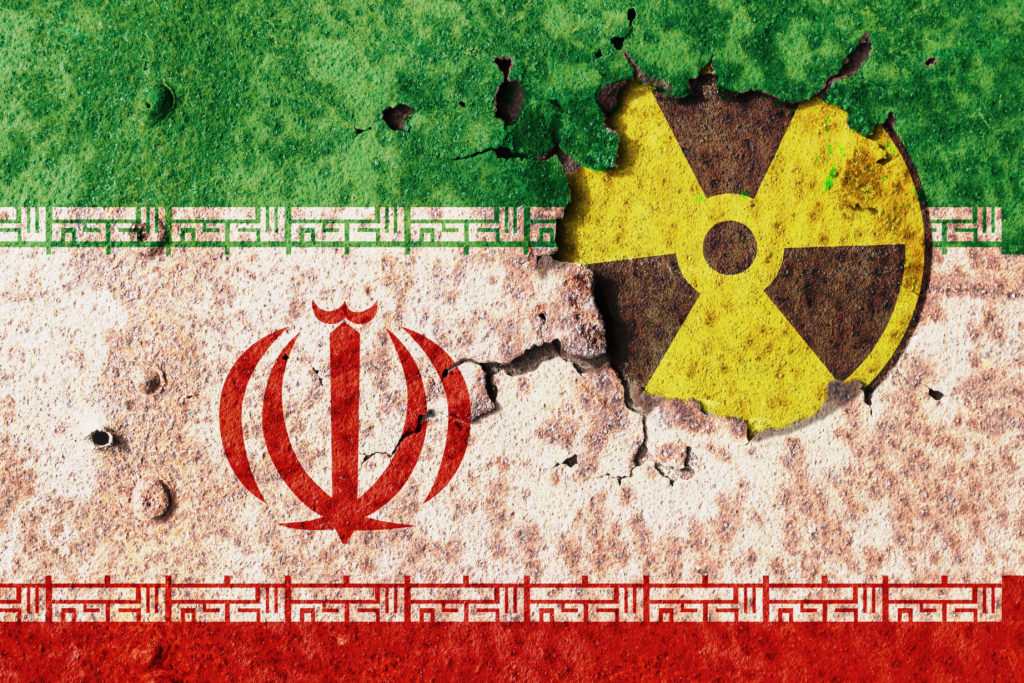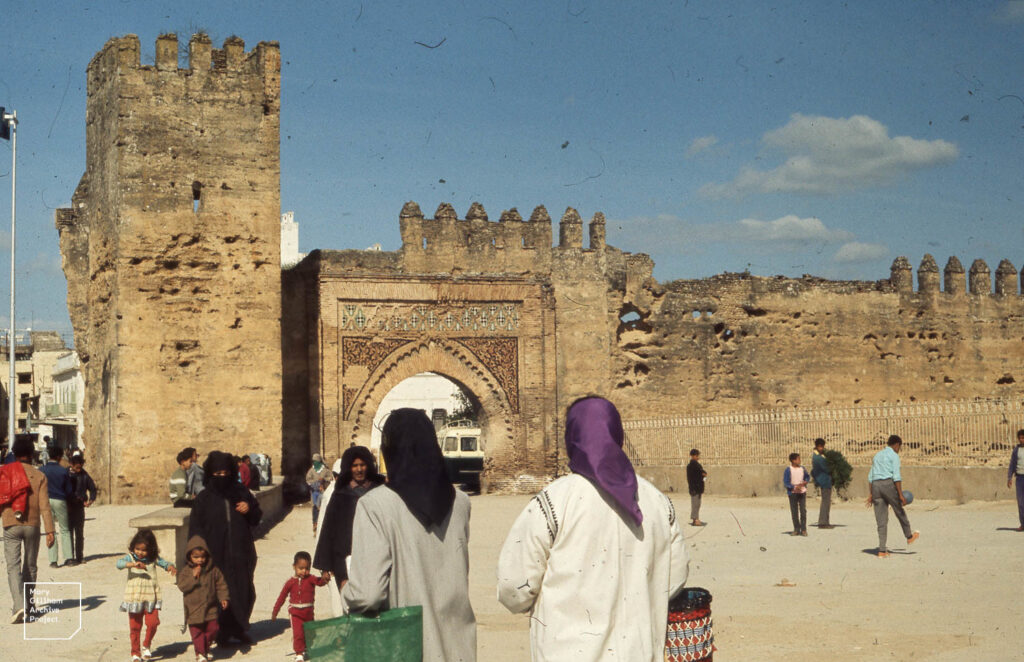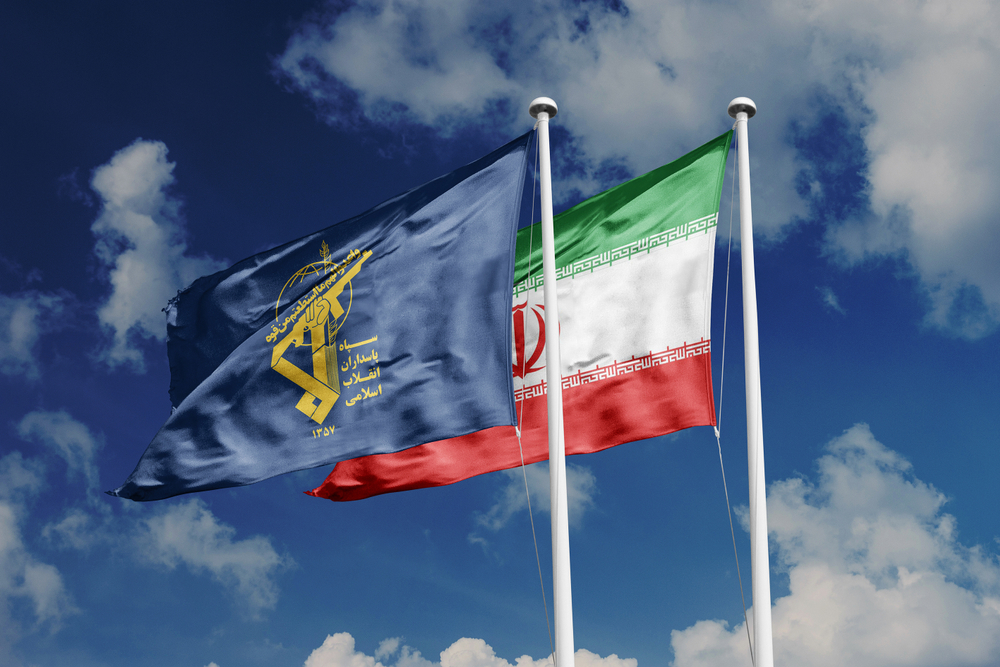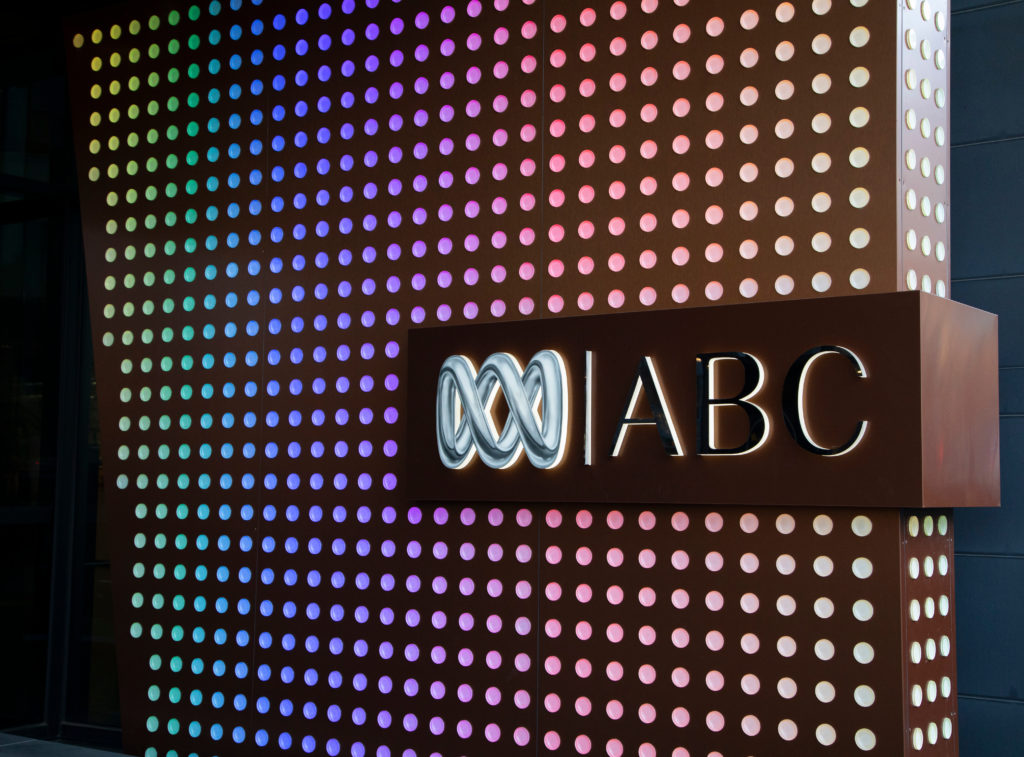UPDATES
Inspections crisis with Iran
March 4, 2021 | AIJAC staff

Update from AIJAC
03/21 #01
On. Feb. 22, an agreement was announced between the Iranian regime and the International Atomic Energy Agency (IAEA) to somewhat limit IAEA inspections in Iran, though not to the degree Iran had originally been threatening to limit them. The deal is set to last for three months. (Details of this agreement are not fully known, but what is known is discussed here.) This Update deals with the aftermath of this deal, as it pertains to current diplomatic efforts to deal with the Iranian nuclear program, and US plans to return to the 2015 JCPOA nuclear agreement.
We lead with veteran Israeli academic and diplomat Amb. Dore Gold. He says there is little to celebrate in this understanding, which even IAEA head Rafael Grossi admits will lead to less access for his inspectors. Gold argues this new arrangement is part of a wider pattern of the West failing to react robustly enough to a variety of Iranian provocations and misbehavior across numerous fronts. For his full discussion, CLICK HERE.
Next is American former official and analyst Richard Goldberg, who focuses on new revelations about previously undisclosed Iranian nuclear sites. He argues a major mistake would be for the US to return to the JCPOA nuclear deal without fully accounting for all past nuclear activities – something the JCPOA was supposed to require but in practice never happened. He also suggests that both the new revelations and Iran’s ability to pull the plug on elements of the inspections show that the inspection regime currently has major holes in it. For his important argument, CLICK HERE.
Finally, on a slightly different note, former American prisoner in Iran Wang Xiyue discusses what he learned about hopes that the US and the West can change Iranian behavior by appeasing Iranian grievances for past mistreatment. He makes it clear that he went to Iran as a scholar believing that Western policy was responsible for Iranian misbehavior, before being re-educated by the Iranians themselves following his arrest – which occurred just after the JCPOA came into effect. He says it is clear that the Iranian regime will never trust the US for ideological reasons, cannot be appeased, but must instead be “countered and restrained”. For this passionate plea from someone with unique insights into the Iranian regime, CLICK HERE. American scholar Michael Rubin also had a similar piece on the false belief that Iranian anti-Americanism is a result of past US policies.
Readers may also be interested in…
- Iran is threatening to end its deal with the IAEA if it is censured for its behavior at this week’s meeting of the IAEA’s board of governors, but France says a motion of censure will go forward.
- Iran continues to reject talks about nuclear issues with the US.
- Iran expert Behnam Ben Taleblu interviewed about the Iranian strategy of “threaten, rinse and repeat” for nuclear diplomacy.
- Israeli academic Prof. Abraham Ben-Zvi warns the Biden Administration’s strategy of courting Iran is likely to backfire.
- A Wall Street Journal editorial also makes the point that the Administration’s mixed messages on Iran are likely to be a problem.
- Some examples from the many stories and comments now appearing at AIJAC’s daily “Fresh AIR” blog:
- Naomi Levin on former Australian prisoner in Iran Kylie Moore-Gilbert and her efforts to aid those still imprisoned by the Iranian regime.
- AIJAC Research Associate Dr. Ran Porat looking at the possibility of an Israel-Hezbollah war in 2021.
- An AIJAC media release on a successful request to the streaming service Binge for removal of an offensive episode of the drama program “Nurses”.
- An AIJAC statement on the announcement by the International Criminal Court (ICC) prosecutor that an investigation will formally be opened into “The Situation in Palestine.”
- Video of AIJAC’s webinar with former senior American official and analyst Elliott Abrams, on the subject “Trump to Biden: The Middle East and US Policy”. For those who did not see it, Abrams also spoke to Greg Sheridan of the Australian last week.
Iran deal: Insufficient diplomatic strength to stop Tehran
By DORE GOLD
Jerusalem Post, FEBRUARY 25, 2021

IAEA head Rafael Mariano Grossi, who is admitting that new arrangements with Iran are limiting his agency’s ability to carry out its inspections work (Photo: Flickr | License details, Creator: Dean Calma).
“There is less access, let’s face it.” This is how Rafael Mariano Grossi, the director-general of the International Atomic Energy Agency (IAEA) summarized the results of his talks with the Iranians during mid-February, just before a new Iranian law mandated by the parliament went into effect cutting back the monitoring of the Iranian nuclear program. There would be no more “snap inspections” by the West on Iranian facilities.
There was little reason to celebrate the new understanding. The Iranians followed this latest deal with new statements about their program which were clearly disturbing. Supreme Leader Ayatollah Ali Khamenei declared that Iran’s enrichment levels of its uranium would no longer be limited to 20%. “We may even increase enrichment to 60%.” The Joint Comprehensive Plan of Action (JCPOA) , also known as the “Iran deal” from 2015 limited enrichment to just 3.67%. It should be recalled that enrichment to the level of 90% was what the Iranians needed to manufacture a nuclear explosive device.
Verification of these understandings was extremely flawed. Last November Iran’s enrichment levels reached 12 times the amount that had been permitted in the JCPOA, according to the IAEA. Tehran was now on a path to get closer to an atomic bomb than ever before.
The old Iran nuclear deal had other serious defects that needed to be fixed, but it did not appear that these changes were going to happen. Take ballistic missiles. When the West created an arrangement with Saddam Hussein at the end of the First Gulf War that sought to address his weapons of mass destruction, they did not limit themselves to dismantling biological, chemical and nuclear components that the Iraqis possessed. They included all ballistic missiles above a range of 150 km. But the JCPOA did not touch Iran’s missile capabilities. It was a huge hole in the agreement. There was no indication that it was now going to be remedied.
Another defect in the JCPOA was that it was built around the assumption that if Iran adhered to its terms, Iranian behavior would become more moderate. This was projected in the West to be a possible consequence of the easing of sanctions on the Iranian economy. But now looking back to 2015, the relaxing of sanctions on Iran did not moderate its regional behavior.
The Islamic Revolutionary Guards Corps (IRGC) continued to employ Shi’ite militias sometimes with even greater force. A February 2021 report by the Tony Blair Institute for Global Change did not mince any words on this point: “The number of militias created by the IRGC surged.”

Through its control of Yemen’s Houthis, Iran has gained a strategic presence along the critical Bab el Mandab strait, controlling entry to the Suez Canal (Photo: Shutterstock)
Iranian expansionism was spreading in this period to areas which are not thought to be within its sphere of influence. Its support for the Houthi guerrillas in Yemen gave it a strategic presence along the Bab al-Mandeb that connected the Red Sea and the Indian Ocean. Iran began working with the Polisario in the Western Sahara, basing themselves in Algeria. Iran was operating far away from the Persian Gulf.
What was needed was a robust response by the West to these Iranian actions. Without a strong reaction, the Iranians were likely to escalated their actions across the Middle East. But there was no indication that the US and Europe understood what they were facing.
The writer is the president of the Jerusalem Center for Public Affairs and the former Director-General of Israel’s Ministry of Foreign Affairs. He served as ambassador to the UN during 1997-99.
Biden Risks Repeating Mistakes of the Past if He Ignores the Evidence on Iran
The Islamic Republic has a long track record of willfully concealing its nuclear activities in violation of its treaty obligations.
Richard Goldberg
The Despatch, March 3, 2021

Israel’s seizure of the Iranian nuclear archives in 2018, as exhibited by PM Netanyahu, led to the revelation of additional previously unknown Iranian nuclear sites (Photo: Israeli Ministry of Foreign Affairs).
The U.N.’s nuclear chief on Monday all but accused Iran of lying to international inspectors about the existence of undeclared nuclear material and sites inside the country—an alarming development in an investigation that predates America’s withdrawal from the Iran nuclear deal. The statement raises an important question for the Biden administration: Will Iran be required to account for its past and present clandestine nuclear work before President Joe Biden agrees to lift U.S. sanctions? If the answer is no, Biden will be repeating the mistakes of the past—rewarding Iranian nuclear deception, shredding the integrity of the global nonproliferation regime, and guaranteeing Iran continues its long-term pursuit of nuclear weapons.
Iran, a party to the Nuclear Non-Proliferation Treaty (NPT), has a long track record of willfully concealing its nuclear activities in violation of its treaty obligations. In late 2002, an Iranian dissident group revealed the existence of a secret uranium enrichment facility at Natanz and a heavy water facility at Arak. In 2009, the Obama administration exposed another secret enrichment facility buried deep underground near the city of Qom. In both cases, Iran declared its nuclear activities to the International Atomic Energy Agency (IAEA) only after getting caught. The regime’s nuclear modus operandi is simple: Conceal unless and until exposed.
The 2015 nuclear agreement—formally known as the Joint Comprehensive Plan of Action or JCPOA—nominally required Iran to open up about its past work on nuclear weapons. The deal stipulated that sanctions relief and other key benefits would not be forthcoming until Iran allowed IAEA inspectors to pursue leads indicating Iran sought not only to enrich uranium, but to build an actual nuclear weapon.
Iran agreed, understanding that Obama and his European partners would declare the issue settled regardless of whether Iran allowed a serious investigation. Unsurprisingly, the IAEA reported “ambiguities” in the answers Iran submitted and its inspectors were prevented from visiting a suspected nuclear weapons site until Tehran finished cleaning it up. Regardless, America lifted sanctions, giving Iran access to tens of billions of dollars, and the U.N. Security Council ended its prohibition on Iran’s enrichment of uranium. Iran had ostensibly come into compliance with the NPT and abandoned its quest for nuclear weapons—or so we thought.
In early 2018, while the United States remained a participant in the JCPOA, Israel’s Mossad intelligence service infiltrated a storage facility near Tehran and removed a secret nuclear weapons archive Iran had concealed from the IAEA. Academics who have seen parts of the archive describe it as a breathtaking curation of Iran’s work to build nuclear weapons. The regime meticulously logged its every move—and it archived those moves for a reason.
In September 2018, Israeli Prime Minister Benjamin Netanyahu revealed the existence of a “secret atomic warehouse for storing massive amounts of equipment and materiel from Iran’s secret nuclear program.” Commercial satellite imagery of the site in the Turquzabad district of Tehran showed Iran moving containers and later sanitizing the site. The following year, the IAEA inspected the site and found traces of undeclared nuclear material, indicating continued violation of the NPT.
Also in 2019, the U.S. Treasury and State Departments revealed that the founder of Iran’s nuclear weapons program—the late Mohsen Fakhrizadeh, who was assassinated last year in Iran—had led a secret Iranian military group, the Organization of Defensive Innovation and Research or SPND, which employed Iranian nuclear weapon scientists. Layered atop the existence of the nuclear archive and possible undeclared nuclear activities, the full extent of Iranian nuclear deception was slowly coming into focus.
IAEA Director General Rafael Grossi brought that picture into sharp relief this week by announcing the agency had inspected three more sites that had never been declared to the agency and found traces of nuclear material at two of them. These sites may be connected to another reported secret Iranian nuclear site at Abadeh, which Netanyahu exposed in a September 2019 press conference. As for questions surrounding the Turquzabad site, Grossi said the IAEA was “deeply concerned that undeclared nuclear material may have been present at this undeclared location and that such nuclear material remains unreported by Iran.”
These revelations undermine the very core of the JCPOA and will pose serious challenges to any attempt to resurrect the agreement. First, it’s clear now that Iran deceived the IAEA in 2015 and never provided a complete or truthful accounting of its undeclared nuclear activities. The Obama administration pressed forward with the nuclear deal despite obvious red flags that Iran was still covering up its true nuclear ambitions. Giving Iran a free pass on nuclear deception led only to more deception. The Biden administration should not repeat the mistakes of the past by rejoining the pact and lifting U.S. sanctions before Iran comes clean.
Second, critical deficiencies in the JCPOA’s inspection regime are on full display. The IAEA didn’t seem to know Iran was hiding a nuclear archive until the Mossad announced it had stolen it. Nor did the agency seem to have any idea Iran had a secret warehouse or other undeclared sites where nuclear material had been stored until they were exposed by the prime minister of Israel. Most concerning, Iran keeps its military facilities off-limits to IAEA inspections—leaving a gaping hole in its verification regime. SPND, of course, is a military organization.
Third, the IAEA is pulling on a thread that opened while America remained a participant in the JCPOA. Unlike other nuclear misconduct topping the news, including the enrichment of uranium, Iran’s nuclear deceit is not a response to U.S. withdrawal from the deal or imposition of sanctions—it is a fundamental breach of its nuclear obligations and commitments, including the NPT.

The 2015 JCPOA nuclear deal was predicated on Iran abandoning its nuclear weapons ambitions and coming clean to the IAEA about its clandestine nuclear activities – but this never happened (Photo: Wikimedia Commons | License details, Creator: Dragan TATIC).
President Biden’s stated condition for the United States to rejoin the JCPOA is for Iran to first return to “strict compliance” with the deal. Since the deal was premised on Iran abandoning its nuclear weapons ambitions and coming clean to the IAEA about its clandestine nuclear activities, the Biden administration must demand Iran fully account for all undeclared nuclear activities, sites and materials prior to rejoining the agreement and lifting sanctions. Otherwise, the president will be hard-pressed to explain the U.S. national security interest in a nuclear deal that pays Iran billions of dollars to keep its nuclear weapons-related activities secret.
Defenders of the JCPOA argue that the nuclear archive is historical in nature rather than a current nuclear threat. The JCPOA, by contrast, deals with the threat in front of us: Iran’s enrichment. Don’t create an unnecessary hurdle to resolving the threat in front of us with questions about the past, they will say.
But Iran’s failure to disclose nuclear sites and materials is not about history—it’s about an active breach of the NPT, which the IAEA was unable to detect using the JCPOA’s verification regime.
Papering over Iran’s breach of its most fundamental nuclear obligations in favor of the empty reassurances provided by a flawed nuclear agreement would be an enormous strategic mistake—not just for the new administration’s Iran policy but for other regimes watching across the world. To reward Iran with sanctions relief for concealing undeclared nuclear material and activities poses a far greater threat to the global nonproliferation regime than withdrawal from flawed agreements.
Richard Goldberg is a senior adviser at the Foundation for Defense of Democracies. He served on Capitol Hill, on the U.S. National Security Council, as the governor of Illinois’s chief of staff, and as a Navy Reserve Intelligence Officer.
What I Learned in an Iranian Prison
U.S. foreign policy isn’t to blame for the mullahs’ deep-rooted hatred of America and Americans.

An anti-American protest in Iran: Scholar Wang Xiyue learned that such hatred is built into the system and cannot be appeased. (Photo: Nicky Urban / Shutterstock.com)
Iran, Europe and many American progressives are pressuring the Biden administration to revive the 2015 nuclear deal known as the Joint Comprehensive Plan of Action, or JCPOA. Official groupthink has coalesced around a singularly misguided belief: The U.S. has so badly mistreated Iran in the past that it must engage and appease the Islamic Republic now. I understand this view because I was once taught to believe it. This mindset is what convinced me in 2016 that I could safely do research for my dissertation in Iran. My optimism was misplaced. Not long after I arrived, I was imprisoned by Iran’s brutal regime and held hostage for more than three years.
When I went to Iran, I shared the prevailing academic view of the Middle East. I had absorbed the oft-repeated lesson that political Islam arose in response to Western colonialism and imperialism, and that the West—particularly America’s Middle East behavior—was chiefly responsible for the region’s chaos. My professors taught that the U.S. had treated Iran with a mixture of Orientalist condescension and imperialist aggression since the founding of the Islamic Republic in 1979. I believed America’s role in the 1953 coup that removed Prime Minister Mohammad Mossadegh explained everything that had gone wrong in Iran. Convinced that the mullahs’ hostility toward the U.S. was exaggerated, I often dismissed allegations of the regime’s malign behavior as American propaganda.
Since it was obvious that American foreign policy itself was the problem, and that the regime would happily normalize relations once the U.S. pivoted away from disrespect, I assumed I’d be left alone in Iran if I remained apolitical and focused on historical research. Imagine my shock when the Iranian Ministry of Intelligence arrested me on false espionage charges in August 2016, shortly after the implementation of the JCPOA—during what appeared to be a period of rapprochement between the U.S. and Iran. I was thrown into solitary confinement, forced to confess things my interrogator knew I had not done, and sentenced to 10 years in prison.
My interrogator made clear that my sole “crime” was being an American. He told me I was to be used as a pawn in exchange for U.S.-held Iranian prisoners and the release of frozen Iranian assets. (I was released in a 2019 prisoner swap.)
My terrible 40-month imprisonment was a period of intense re-education about the relationship between Iran and the U.S. The Islamic Republic is an ambitious power, but not a constructive one. It’s a spoiler, projecting influence by exporting revolution and terrorism via its proxies in the Middle East. Domestically, the mullahs have failed to deliver on their political and economic promises to the Iranian people, on whom they maintain their grip through oppression.
Nothing I’d learned during my years in the ivory towers of academia had prepared me for the reality I encountered in an Iranian prison. I learned what many Iranians already know: The regime’s hostility toward the U.S. isn’t reactive, but proactive, rooted in a fierce anti-Americanism enmeshed in its anti-imperialist ideology. As I witnessed firsthand, Tehran isn’t interested in normalizing relations with Washington. It survives and thrives on its self-perpetuated hostility against the West; a posture that has been integral to the regime’s identity.
The regime didn’t regard President Obama’s engagement as a goodwill gesture, but rather as an “iron fist under a velvet glove.” Iran’s revolutionary regime retains power through conspiracy and intrigue, and views everything through that lens. The notion that it will be difficult for the U.S. to regain Iran’s trust after quitting the JCPOA is incorrect. The Iranian regime has never trusted the U.S., and never will.
When I was being interrogated in Evin Prison in summer 2016, my interrogator boasted that he and his hard-line colleagues were eager to see Donald Trump elected, not because the regime viewed him as the type of pragmatic leader they could deal with, but because it would justify a more confrontational stance against the Great Satan.
The menace of the Islamic Republic can’t be appeased. It must be countered and restrained. Only the U.S. has the capacity to lead such an endeavor. For 42 years Iran has demonstrated that it changes its behavior only in response to strength in the form of American-led international pressure. If the Biden administration returns to the JCPOA without extracting concessions from Tehran beyond the nuclear threat, it will relinquish all U.S. leverage over the regime.
Diplomacy can’t succeed without leverage. Only by showing strength of will can President Biden hope for genuine progress in containing the Iranian threat to peace.
Mr. Wang is a doctoral candidate in history at Princeton and a fellow at the American Enterprise Institute.






